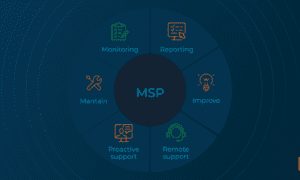Automation’s Dirty Secret: Why Your Scripts Fail Without This Foundational Skill
You spent weeks writing the perfect Ansible playbook.
You copied best practices from GitHub.
You even added fancy error handling.
Then you ran it in production.
Silence.
Not the good kind. The oh-god-why-is-everything-down kind.
Turns out your script assumed all switches had the same OS version. Or that BGP neighbors would always respond within 3 seconds. Or that VLAN 69 wasn’t already used for the CEO’s secret IoT espresso machine.
Here’s the dirty secret nobody in the automation hype-train tells you:
Flawless scripts fail spectacularly when they meet real-world networks.
And no amount of Python courses will fix it.
🤖 Why Your Automation Feels Like Duct Tape & Hope
Let’s autopsy the corpse of your last failed script:
Symptom | Real Cause
Your playbook timed out | You assumed OSPF convergence would always take <30s
Configs deployed but broke routing | You didn’t anticipate that one legacy router ignoring “ipv6 enable”
Switch rebooted but never came back | Your script didn’t check if the stack master changed mid-update
Automation doesn’t exist in a vacuum. It interacts with the messy, inconsistent, gloriously chaotic reality of:
- Protocols with personalities (BGP isn’t “set and forget”—it’s a moody artist)
- Hardware with hidden quirks (That Nexus switch? It treats IPv6 ACLs differently)
- Humans with fat fingers (Someone manually added a static route that breaks your script’s logic)
🔍 The Missing Foundation: Network Whispering
Automation tools are instruments.
But you can’t play Beethoven if you don’t understand music theory.
True automation mastery requires:
- Knowing how networks actually behave (not just textbook diagrams)
- Why does that OSPF neighbor flap every 2 hours?
- How will STP react if your script disables 3 ports at once?
- Speaking the device’s language
- Not just CLI commands—the why behind them
- Why “ip helper-address” works here but breaks DHCP there
- Predicting chaos
- What happens if a fiber cut occurs during your firmware script?
- Will your VLAN cleanup trigger a broadcast storm?
Without this?
You’re just building “idiot savant scripts”—brilliant at one task, catastrophically dumb at context.
“But I passed my CCNA!”
Basic certs teach you to follow recipes.
Expertise teaches you to invent new ones when the kitchen’s on fire.
🛠️ How to Fix It: Stop Coding, Start Understanding
✅ Become a Protocol Therapist
Don’t just configure OSPF. Break it.
- Intentionally misconfigure timers
- Flood it with LSAs
- Watch how it self-heals (or collapses)
Until you can feel its limits.
✅ Break Prod (Safely)
Chaos Engineering > Dry Labs
- Yank cables during BGP convergence
- Reboot core switches during backups
- Spoof MAC addresses
Tools: - Cisco Modeling Labs (virtual chaos)
- Batfish (predict config explosions)
✅ Read the Logs Like Poetry
That cryptic syslog message? It’s a horror story in 3 lines:
%OSPF-5-ADJCHG: Adjacency to 10.0.0.1 dead
Translation: “Your script murdered me. I trusted you.”
⚡ The Expert’s Edge: When Automation Actually Works
Picture this:
Your script gracefully skips a switch because it detected an unsupported module.
It pauses BGP updates during a flapping WAN link.
It emails you: “VLAN 69 is occupied by espresso machine. Aborting.”
This isn’t magic. It’s built on:
- Deep protocol intuition
- Troubleshooting scars
- The ability to anticipate failure
How do you gain this?
It’s not more Python tutorials.
It’s rewiring how you see networks.
Programs like the Cisco Certified Internetwork Expert (CCIE) Enterprise Infrastructure certification exist for one reason: to forge this exact mindset. Its infamous lab exam isn’t a test—it’s 8 hours of controlled chaos where you prove you can:
- Diagnose misbehaving protocols while configuring new ones
- Spot a single typo in a 200-device topology
- Architect solutions that survive real-world entropy
(Psst: Sprintzeal’s CCIE Enterprise Infrastructure Training focuses ruthlessly on this—transforming you from a config typist to a network strategist.)
🔥 The Takeaway: Automate Your Brain First
Your scripts will keep failing until you:
- Respect the complexity (Networks aren’t Legos)
- Learn by breaking things (Labs > Lectures)
- Seek deep mastery (Not just quick-fix certs)
Automation without foundation is just faster failure.
“But I don’t have time to learn all this!”
How much time do you spend fixing broken scripts?
👉 Ready to automate with confidence?
Stop patching symptoms. Master the foundation. Explore how expert-level training like a CCIE Boot Camp builds the network intuition your scripts desperately need.
Your code isn’t broken. Your understanding might be. 💻🔥



































